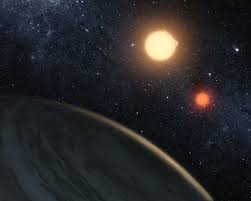Exoplanets orbiting Trappist-1 have thrilled astronomers since their discovery last year thanks to their Earth-like potential to harbor water
Scientists have identified two planets circling round a dim dwarf star as especially likely candidates to have habitable conditions, with probable water and a source of heat, attributes thought necessary for life beyond Earth.
Since their discovery last year, the seven planets and their star, called Trappist-1, have thrilled astronomers hunting for a world resembling Earth. Never before had scientists found so many Earth-sized planets around a single star, or in a zone where the extreme temperatures of space would not obliterate the chances of life.
The finding suggested that there may be planets as rocky and large as Earth all over the Milky Way, and scientists quickly set to work analyzing the Trappist-1 system.
With colleagues in Hungary, Dr Amy Barr of the Planetary Science Institute built mathematical models of the seven planets and their interiors, and found that six of the seven worlds probably have water, as liquid or ice, with a global ocean possible on one. The team then modeled the planets’ orbits to determine a likely surface temperature on the worlds
“That’s one of the main innovations of the paper,” Barr told the Guardian. “The planets are also on eccentric orbits – kind of egg-shaped – so every time the planet goes around the star it gets stretched and squeezed.”
Jupiter’s moon Io, experiences the same kind of push-pull, called tidal heat. Io’s surface is riven by erupting volcanoes, lava flows, scars and caldera. Barr said the same forces are probably at work in the Trappist-1 system: “The planet kind of works its own internal friction, because that stretching and squeezing creates heat in the interior.”
In the paper, set to be published in the journal Astronomy & Astrophysics, the team concluded that planets b and c (each world goes by a lower-case letter), experience tidal heat, and that planet c probably has little to no water, but mostly iron and rock. Planets d and e – the two identified as most likely to be habitable – also experience tidal heat, they found, but much less.
They calculated that those planets are “in this kind of temperate region”, Barr said, with a “very reasonable surface temperatures”. Planet d, the team estimates, has a temperature around 15C (59F) or perhaps as low as slightly warmer than the melting point of ice. Planet e was colder, Barr said: “the temperatures you would get in Antarctica, but also reasonable”.
The likelihood of tidal heating is encouraging to scientists in search of planets with the conditions for life. Tidal heat not only warms a planet, but also drives chemistry and flow in its mantle, conditions amenable to the development of life – at least as humans know it.
 Lebanese Ministry of Information
Lebanese Ministry of Information



